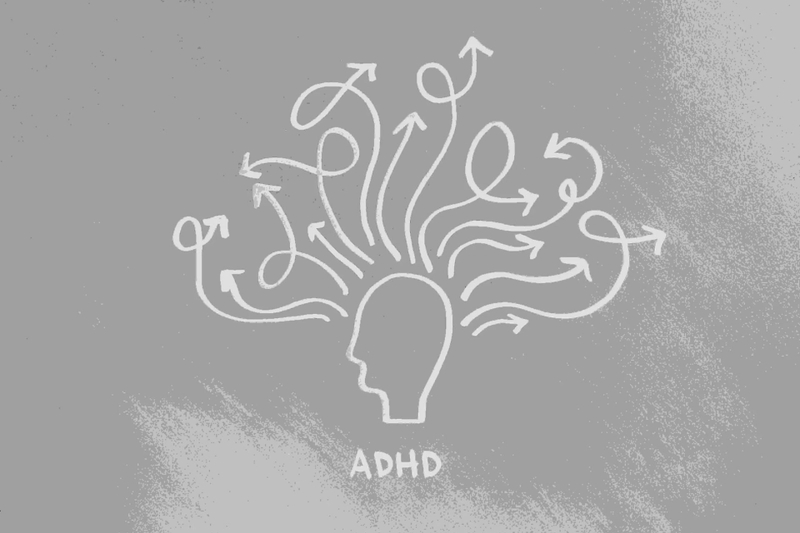When a child receives an ADHD diagnosis, it opens a complex chapter for many families. A phase usually dominated by the pursuit to find the most fitting treatment. For each child There's a unique way to manage and contain ADHD, dictated by the specific and unique needs and conditions of each child. This path can not be navigated alone; the optimal treatment involves a cacophony of support, including medical professionals, educators, and extended family.
Studies have shown that up to 60% of children with ADHD carry symptoms into adulthood, impeding their educational trajectory as well as their social life. This fact emphasizes the value of early and targeted intervention efforts. In ADHD-affected homes, the search for balance is usually a key concern, as families attempt to reconcile expert guidance with their deep grasp of their child's world.
When Should Your Child Be Evaluated for ADHD?
Seeking a diagnosis for ADHD (Attention-Deficit/Hyperactivity Disorder) is a vital first step for families who observe persistent patterns of inattention, hyperactivity, and impulsivity in their kids that are unusual for their age. The American Academy of Pediatrics advises that children be tested for ADHD if they exhibit these behaviors regularly in more than a single setting (such as home and school) for six months or more, especially if they interfere with their social, educational, or emotional development.
Common indicators to look out for include difficulties sustaining concentration in tasks, frequent forgetfulness in everyday chores, excessive chatting, fidgeting, or an inability to sit still, and impulsive behaviors with no apparent regard for consequences.
The diagnostic procedure often begins with a thorough examination by a healthcare expert, such as a pediatrician, psychologist, or psychiatrist. This assessment usually involves a comprehensive medical check to rule out any other potential reasons for the child's symptoms, such as hearing or visual impairments, learning difficulties, anxiety, depression, or some forms of sleep disorders. It is critical to identify ADHD from other conditions given that symptoms may overlap, while treatment techniques differ dramatically.
In addition to the medical exam, the diagnosis frequently requires obtaining information from a variety of sources. This comprises standardized behavior rating scales completed by parents, teachers, and, in some cases, the kid themselves. The healthcare professional may also conduct assessments or interviews to better understand the child's behavior in various settings.
The diagnosis method also considers the child's developmental history and family medical history, as ADHD may have hereditary components. In rare circumstances, neuropsychological testing may be advised to evaluate cognitive function and rule out learning disabilities.
Following a diagnosis, the healthcare professional will collaborate with the family to develop a complete treatment plan. This strategy may involve behavioral interventions, educational assistance, medicine, or a mix of these. The family's active participation in the treatment process is critical, since their support and understanding play a substantial part in the management of such conditions.
Chances of Misdiagnosis and overlapping Symptoms
ADHD, which is characterized by symptoms such as inattention, hyperactivity, and impulsivity, sometimes has overlapping symptoms with a variety of other conditions, potentially leading to misdiagnosis. Notably, disorders including Autism Spectrum Disorder (ASD), which is defined by difficulty in social interaction and repetitive behaviors, may resemble ADHD's inattention and hyperactivity. Learning conditions, particularly dyslexia, are sometimes incorrectly diagnosed as ADHD due to similar difficulties focusing and processing information. Anxiety disorders and depression, which exhibit symptoms such as restlessness and difficulty concentrating, may reflect ADHD's defining characteristics.
Even sleep abnormalities, such as sleep apnea, can cause daytime inattentiveness and hyperactivity, much like ADHD. As a result, a thorough, multifaceted diagnostic approach is needed to differentiate ADHD from these similar presenting conditions.
What Are the Treatment Options for ADHD?
ADHD (Attention-Deficit/Hyperactivity Disorder) treatment can be challenging and commonly combines medication, behavioral therapy, and lifestyle alterations. Each treatment plan is customized and fine-tuned, taking into account the severity of symptoms and the child's unique and individual requirements.
Medications: Stimulants, such as methylphenidate (Ritalin, Concerta), and amphetamines, are the most commonly prescribed drugs for ADHD. These medications boost and balance neurotransmitter levels in the brain, which improves attention while decreasing hyperactivity and impulsivity.
Non-stimulant drugs, such atomoxetine (Strattera) and some antidepressants, provide additional alternatives, particularly for individuals who do not respond well to stimulants. While these drugs work well for the majority of individuals, they might cause sleep difficulties, decreased appetite, weight loss, and higher blood pressure or heart rate. Regular monitoring by a healthcare professional is necessary.
Behavioral Therapy: Behavioral treatments are pivotal, especially for younger children with ADHD. This may include behavioral management tactics for parents, teachers and caregivers, such as positive reinforcement for desired behaviors, regular routines, and clear and consistent rules and consequences. Cognitive behavioral therapy can also help older children and teens in the development of healthy coping mechanisms and social skills.
Lifestyle and Dietary Changes: In accordance with the relevant research in the field, making certain lifestyle alterations can help contain and manage ADHD symptoms. This involves adhering to a consistent sleep pattern, participating in regular physical activity, and resorting to a balanced diet. Certain studies suggest that certain dietary additives and sugar may worsen ADHD symptoms in certain children, although this is currently under close examination and scrutiny.
Alternative Treatments: Some families investigate alternative therapies such as neurofeedback, in which individuals learn to manage their brain wave patterns, or nutritional supplements such as omega-3 fatty acids. However, these options should be reviewed with a healthcare provider since their efficacy and safety vary. These alternatives are less understood and studied than established therapies.
Combination Therapy: Typically, the most efficient treatment is a combination of medication and behavioral therapy. Recent studies have shown that a multimodal approach can improve academic performance and social interactions while also lowering the overall intensity of symptoms.
It's worth noting that ongoing research continues to reveal fresh insights into ADHD therapy. For example, breakthroughs in genetic testing may someday allow for more personalized pharmaceutical choices, and novel digital treatments, like cognitive training applications, are developing as potential supplemental therapy alternatives.
Practical Home Tips for Managing Children with ADHD
For parents and caregivers managing children with ADHD, a supportive home atmosphere is indisputable. Start by creating a consistent timetable, since children with ADHD typically thrive on regularity and predictability. Daily plans for schoolwork, food, and bedtime serve to minimize anxiety and promote stability. Minimize distractions in their study location; a peaceful, clutter-free environment can help them concentrate. Use organizing tools such as calendars and color-coded folders to help children keep on track. Positive reinforcement is essential; recognize and praise modest accomplishments to boost self-esteem and encourage desirable behaviors.
Incorporating physical activity into their routine can also be useful, as research has shown that exercise improves concentration and reduces hyperactivity. Additionally, make sure your child gets enough sleep, since an insufficient amount of rest may aggravate ADHD symptoms. While no one meal has been shown to manage ADHD, a well-balanced diet rich in fruits, vegetables, whole grains, and lean meats can help with general brain health.
consider using mindfulness and relaxation practices, such as deep breathing or yoga, to help them manage stress and focus. Remember that each child is unique, so adjust these tactics to meet your child's personal requirements and preferences.
Therapeutic Art Activity for Children with ADHD
1.Craft Projects: Simple craft projects may provide both soothing and enjoyable experiences. Making friendship bracelets, scrapbooking, and creating models may all help you improve your fine motor skills and attentiveness.
2.Paint by Numbers Kits: These kits serve as valid meditative and therapeutic instruments to supplement the treatment of children dealing with ADHD. offering a structured yet creative activity that can be both calming and rewarding. Through the use of famous characters like ‘Darth Vader Paint By Numbers’ and relatable themes such as ‘star wars paint by numbers’, parents can tap into the natural interest of their kids for maximum engagement and enjoyment.
These conventional kits provide canvases with pre-mapped and numbered sections, each corresponding to a given color. This practice encourages concentration and patience since it demands attention to detail and a consistent pace. Painting itself is contemplative, providing a sensory experience that may be quite pleasant, while embracing beloved characters such as ‘Boba Fett Paint By Numbers’ and ‘Grogu Paint By Numbers’
3.Coloring Books: Adult and child-friendly coloring books, particularly ones with detailed designs, are good for improving focus and mindfulness. They demand attention to detail and provide a relaxing pastime for both parent and kid.
4.Digital Art Apps: For families comfortable with technology and gadget usage, various applications provide digital painting and sketching experiences. These can be especially enticing to children who like screen time, but they can also be used for creative and relaxing activities.
Finally, each family's approach to ADHD management is unique. It is a journey full of opportunities for development and resilience. As we move on, let us recall Winston Churchill's words: "Success is not final, failure is not fatal: it is the courage to continue that counts." With courage, patience, and firm support, children with ADHD can eventually overcome obstacles and thrive.


